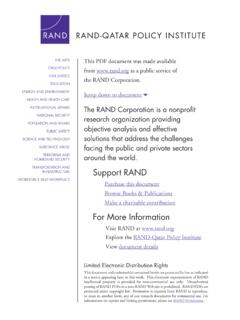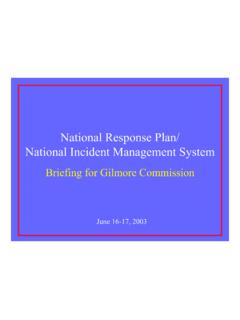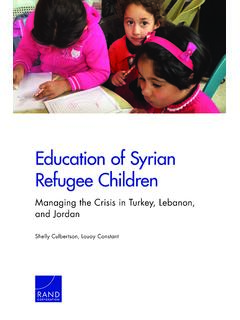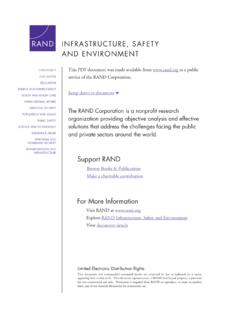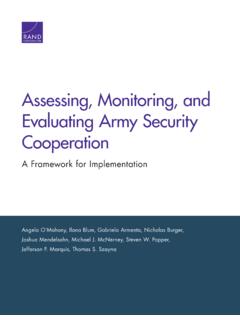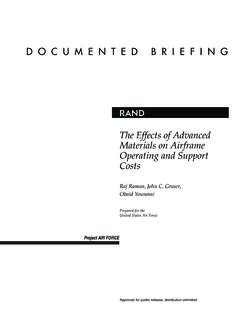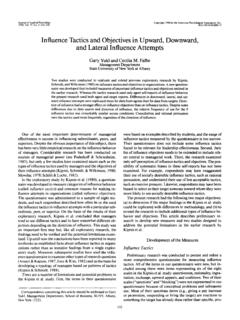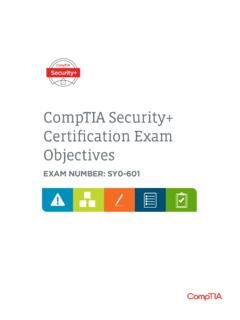Transcription of Understanding Russian “Hybrid Warfare” - RAND Corporation
1 Testimony Understanding Russian hybrid Warfare And What Can Be Done About it Christopher S. Chivvis CT-468 Testimony presented before the House Armed Services Committee on March 22, 2017. For more information on this publication, visit Testimonies rand testimonies record testimony presented or submitted by rand associates to federal, state, or local legislative committees; government-appointed commissions and panels; and private review and oversight bodies. Published by the rand Corporation , Santa Monica, Calif.
2 Copyright 2017 rand Corporation is a registered trademark. Limited Print and Electronic Distribution Rights This document and trademark(s) contained herein are protected by law. This representation of rand intellectual property is provided for noncommercial use only. Unauthorized posting of this publication online is prohibited. Permission is given to duplicate this document for personal use only, as long as it is unaltered and complete. Permission is required from rand to reproduce, or reuse in another form, any of its research documents for commercial use.
3 For information on reprint and linking permissions, please visit 1 Understanding Russian hybrid Warfare and What Can be Done About It Testimony of Christopher S. Chivvis1 The rand Corporation2 Before the Committee on Armed Services United States House of Representatives March 22, 2017 s used today in reference to Russia, hybrid warfare refers to Moscow s use of a broad range of subversive instruments, many of which are nonmilitary, to further Russian national interests. Moscow seeks to use hybrid warfare to ensure compliance on a number of specific policy questions; to divide and weaken NATO; to subvert pro-Western governments; to create pretexts for war; to annex territory; and to ensure access to European markets on its own terms.
4 Experts use the term hybrid warfare in different ways. Several related terms are now in use, including gray zone strategies, competition short of conflict, active measures, and new generation warfare. Despite subtle differences, all these terms point to the same thing: Russia is using multiple instruments of power and influence , with an emphasis on nonmilitary tools, to pursue its national interests outside its borders often at the expense of interests and those of allies. Russia s use of hybrid strategies has grown markedly in recent years.
5 This growth is a key dimension in the overall increase in Russian military capabilities and the Kremlin s antagonistic attitude toward the West. Russian resources for hybrid warfare are not infinite, of course, and Russia faces many of the same difficulties any other country does in coordinating a multipronged foreign policy. Its hybrid tactics will also not be effective everywhere. Nevertheless, the United States and its allies need a clear Understanding of the threat and strategy to effectively counter Russian hybrid strategies before critical interests are damaged in Europe and 1 The opinions and conclusions expressed in this testimony are the author s alone and should not be interpreted as representing those of the rand Corporation or any of the sponsors of its research.
6 2 The rand Corporation is a research organization that develops solutions to public policy challenges to help make communities throughout the world safer and more secure, healthier and more prosperous. rand is nonprofit, nonpartisan, and committed to the public interest. 3 Olga Oliker, Christopher S. Chivvis, Keith Crane, Olesya Tkacheva, and Scott Boston, Russian Foreign Policy in Historical and Current Context, Santa Monica, Calif.: rand Corporation , PE-144-A 2015. A 2 This testimony explains the key characteristics and uses of Russian hybrid warfare, the major tools involved, and the countries currently targeted.
7 It then gives a brief sketch of the history of Russian hybrid warfare and outlines basic elements for a strategy to counter it. Key Characteristics of Russian hybrid Warfare Russian hybrid warfare has at least three main characteristics. It economizes the use of force. Recognizing Russia would stand little chance of winning a protracted conventional conflict with NATO, Moscow seeks instead to pursue its interests without overt use of military power if possible. Russia may still use its conventional and even nuclear threats as part of a hybrid strategy, but in general it prefers to minimize the actual employment of traditional military force.
8 The use of cyber tools is an excellent example of one way in which Russia economizes on the use of force. It is persistent. hybrid war breaks down the traditional binary delineation between war and peace. The reality of hybrid war is ever-changing intensity of conflict. hybrid war strategies are always underway, although at certain moments they may become more acute and intense or cross over into conventional combat operations. It is population-centric. Russian military experts have watched as the United States and its allies fought in the Balkans, the Middle East, and elsewhere over the course of the last quarter-century.
9 They seized upon the importance of an approach that seeks to influence the population of target countries through information operations, proxy groups, and other influence operations. Russia uses hybrid warfare to work within existing political and social frameworks to further Russian objectives . Typical objectives of Russian hybrid Warfare As practiced today, Russian hybrid warfare can have at least three objectives . 1. Capturing territory without resorting to overt or conventional military force. This was the objective of Russia s successful annexation of Crimea in 2014, the move that launched the debate over Russian hybrid strategies.
10 The annexation of Crimea relied heavily on the now-infamous little green men primarily Russian special forces operating through a newly created Russian special operations command. The use of these elite troops, in conjunction with an information warfare campaign and the deployment of loyal Russian proxies, created circumstances that laid the groundwork for a bloodless conventional takeover of Crimea. Russia used some similar tactics ahead of its 2008 invasion of Georgia. The resulting frozen conflicts in Ukraine and Georgia have hampered these countries efforts towards integration with Western Europe.

